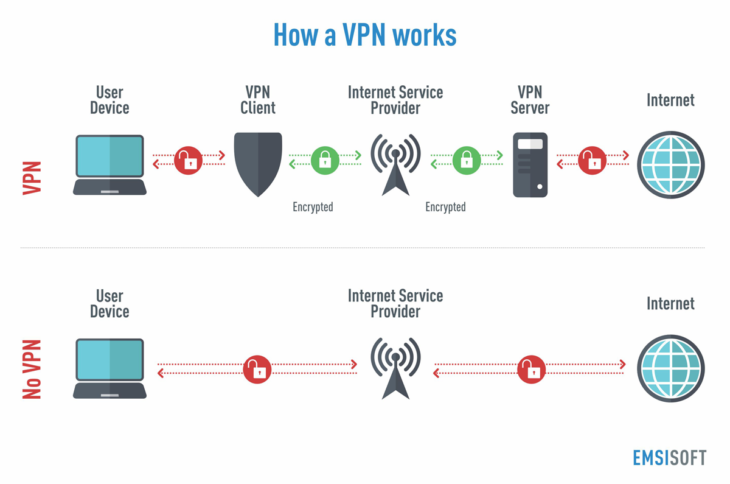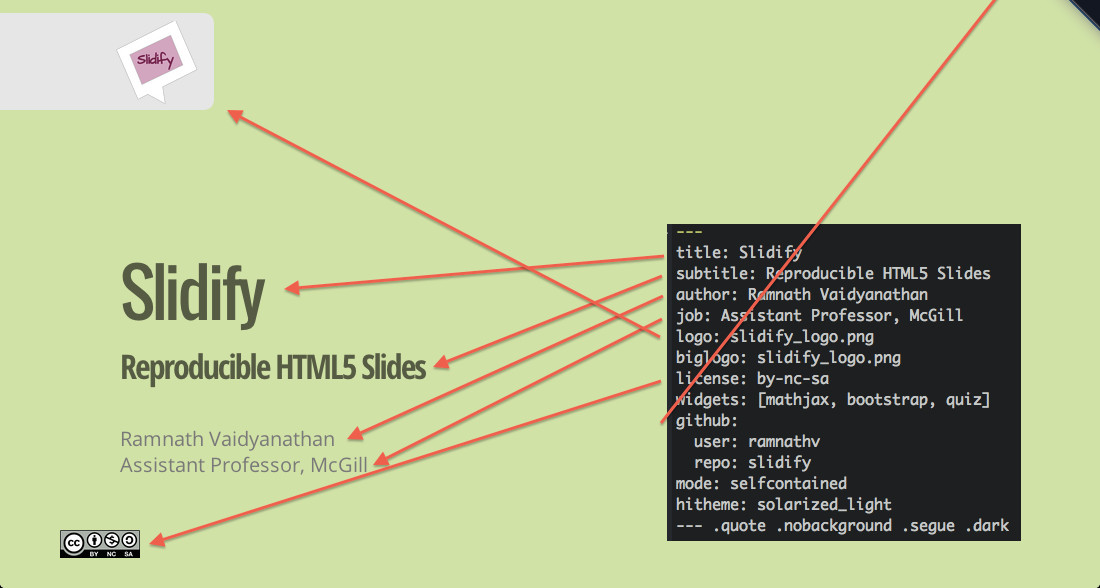There are different ways to fix DNS leaks depending on your initial system
configuration. A common situation, as occurs in Ubuntu 18.04, is when your
system uses systemd-resolved as the network name resolution service.
The problem
A virtual private network (VPN) extends a private network across a public network, and enables users to send and receive data across shared or public networks as if their computing devices were directly connected to the private network. Applications running across a VPN may therefore benefit from the functionality, security, and management of the private network.1

Originally VPN were just a way to connect business networks together securely over the internet or allow you to access a business network from home. But nowadays are really popular for other reasons. As a VPN allows you to create a secure connection to another network over the Internet, it can also be used to access region-restricted websites, shield your browsing activity from prying eyes on public Wi-Fi, and more.2
A common consumer-oriented scenario is to contract a VPN service with a principle to follow in mind. The VPN user expects that all traffic should go through the vpn service, i.e. every single outgoing ip package should be relayed to the vpn server.
But, if you have reached this post is because you have noticed that when your system makes DNS lookups it choses to ignore the fact that a VPN connection is in use and instead relays those requests to other DNS servers, perhaps owned by your ISP, your company or even a local server destroying your anonymity. That’s called a DNS leak.

A DNS leak is a problem with the network configuration that results in loss of privacy by sending DNS queries over insecure links instead of using the VPN connection. Websites exist to allow testing to determine whether a DNS leak is occurring, including dnsleaktest, ExpressVPN, etc.
systemd-resolved
systemd-resolved is a system service that provides network name resolution to
local applications. It implements a caching and validating DNS/DNSSEC stub
resolver, as well as an LLMNR resolver and responder.3
Local applications may submit network name resolution requests via three interfaces:
- The native, fully-featured API systemd-resolved exposes on the bus.
- The glibc
getaddrinfoAPI. This API is widely supported, including beyond the Linux platform. - A local DNS stub listener on IP address 127.0.0.53 on the local loopback
interface. Programs issuing DNS requests directly, bypassing any local API may
be directed to this stub, in order to connect them to
systemd-resolved.
From a long time ago, file resolv.conf specifies the name servers for DNS
lookups. This file is used in various operating systems to configure the
system’s Domain Name System (DNS) resolver. The file is a plain-text file
usually created by the network administrator or by applications that manage the
configuration tasks of the system.4
The resolv.conf configuration file contains information that determines the
operational parameters of the DNS resolver and is usually located in the /etc
directory of the file system. The file is either maintained manually or by
applications or services that override its content. That’s what happens with
systemd-resolved.
systemd-resolved has four modes of handling /etc/resolv.conf:
- Maintaining the
/run/systemd/resolve/stub-resolv.conffile for compatibility with traditional Linux programs. This file lists the 127.0.0.53 DNS stub as the only DNS server and may be symlinked from/etc/resolv.conf. It also contains a list of search domains that are in use by systemd-resolved. The list of search domains is always kept up-to-date. This mode of operation is recommended and the default in Ubuntu 18.04 Desktop. - Providing a static file
/usr/lib/systemd/resolv.confthat lists the 127.0.0.53 DNS stub as only DNS server. This file may be symlinked from/etc/resolv.confin order to connect all local clients that bypass local DNS APIs tosystemd-resolved. This file does not contain any search domains. - Maintaining the
/run/systemd/resolve/resolv.conffile for compatibility with traditional Linux programs. This file may be symlinked from/etc/resolv.confand is always kept up-to-date, containing information about all known DNS servers. In this mode local clients that bypass any local DNS API will also bypasssystemd-resolvedand will talk directly to the known DNS servers. -Alternatively,/etc/resolv.confmay be managed by other packages, in which casesystemd-resolvedwill read it for DNS configuration data. In this mode of operationsystemd-resolvedis consumer rather than provider of this configuration file.
To use a system DNS server preferably for all domains and thus avoid DNS leaks,
you must set DNS Domain: ~.5. The construct ~. is composed of ~ to indicate
a routing domain and . to indicate the DNS root domain that is the implied
suffix of all DNS domains. To do so you must not write over /etc/resolv.conf,
instead instruct systemd-resolved setting the DNS Domain property.
systemd-resolved may be used via two interfaces: directly via its D-Bus
interface, or via glibc NSS getaddrinfo(), in which case it provides forward
and reverse hostname resolution. The former is useful to retrieve arbitrary DNS
resource records or DNSSEC authentication information. It generally provides a
more fine-grained control over the lookups made than the latter. In addition it
provides calls to introspect and configure the DNS resolver.6
D-Bus
D-Bus is an Inter-Process Communication (IPC) mechanism, which is generally used to implement cross-host communication based on local IPC based on AF_UNIX sockets.7
D-Bus adopts the idea of RPC (Remote Procedure Calling), which is equivalent to the local RPC. The RPC framework itself is responsible for the preparation of messages, decoding, security verification, etc. These will greatly simplify the development of applications.
D-Bus protocol supports both RPC and publish-subscribe mechanisms. It contains some basic concepts8:
- A logical Bus over which connected applications may communicate. Applications connected to the bus may query for the availability of objects, call remote methods on them, and request notification for the signals they emit.
- Service. A service is a program that provides IPC APIs. Each service has a
reverse domain name structured identifier name. For example
org.freedesktop.resolve1corresponds to the servicesystemd-resolved. - Object. An object is equivalent to the address of the communication. Objects
are identified within an application via their object path. The object
path intentionally looks just like a standard Unix file system path. The
primary difference is that the path may contain only numbers, letters,
underscores, and the
/character. For example,/org/freedesktop/resolve1is the object path of anorg.freedesktop.resolve1’s service object. - Interface. The interfaces define the methods and signals supported
by D-Bus objects. Each object contains one or more interfaces. The naming
convention for D-Bus interfaces is similar to that of well-known bus names. To
reduce the chance of name clashes, the accepted convention is to prefix the
interface name with a reversed DNS domain name. For example, the standard
Introspection interface is
org.freedesktop.DBus.Introspectable. - Method and Signals. D-Bus methods may accept any number of arguments and may return any number of values, including none. Each method and signal explicitly defines the number and types of arguments they accept. These are encoded as D-Bus Signature strings. Methods and signals must begin with a letter and may consist of only letters, numbers, and underscores.
- Signature Strings. D-Bus uses a string-based type encoding mechanism called Signatures to describe the number and types of arguments requried by methods and signals. Signatures are used for interface declaration/documentation, data marshalling, and validity checking.
To interact with D-Bus from command shell there are some related tools, such as
busctl , gdbus , dbus-send, etc., which can perform some D-BUS related
operations. For example, to introspect the bus for the systemd-resolved
service, you could execute any of these similar commands:
$ gdbus introspect --system --dest org.freedesktop.resolve1 --object-path /org/freedesktop/resolve1
or
$ busctl introspect org.freedesktop.resolve1 /org/freedesktop/resolve1
NAME TYPE SIGNATURE RESULT/VALUE FLAGS
org.freedesktop.DBus.Introspectable interface - - -
.Introspect method - s -
org.freedesktop.DBus.Peer interface - - -
.GetMachineId method - s -
.Ping method - - -
org.freedesktop.DBus.Properties interface - - -
.Get method ss v -
.GetAll method s a{sv} -
.Set method ssv - -
.PropertiesChanged signal sa{sv}as - -
org.freedesktop.resolve1.Manager interface - - -
.FlushCaches method - - -
.GetLink method i o -
.RegisterService method sssqqqaa{say} o -
.ResetServerFeatures method - - -
.ResetStatistics method - - -
.ResolveAddress method iiayt a(is)t -
.ResolveHostname method isit a(iiay)st -
.ResolveRecord method isqqt a(iqqay)t -
.ResolveService method isssit a(qqqsa(iiay)s)aayssst -
.RevertLink method i - -
.SetLinkDNS method ia(iay) - -
.SetLinkDNSSEC method is - -
.SetLinkDNSSECNegativeTrustAnchors method ias - -
.SetLinkDomains method ia(sb) - -
.SetLinkLLMNR method is - -
.SetLinkMulticastDNS method is - -
...
The solution
Now we know what to touch in our operating system we are in a position to solve our DNS related lack of anonymity.
We begin identifying out link number getting information through the command systemd-resolve --status:
$ systemd-resolve --status
Global
...
Link 3 (ppp0)
...
Link 2 (eno1)
...
In this example, the link number of the connection over which the VPN (ppp0) is created is 3.
To get only the number a more customized command could be runned:
$ systemd-resolve --status | grep ppp0 | sed 's/.*Link \([0-9]\+\).*/\1/'
3
Now you’ve got the link number, you will set DNS Domain: ~.. Do it calling
SetLinkDomains() method to set the search and routing domains to use on the
interface ppp0 (link number 3 in the example) for DNS look-ups. It take a
network interface index plus an array of domains, each with a boolean parameter
indicating whether the specified domain shall be used as search domain (false),
or just as routing domain (true). Continuing with the example:
$ busctl call org.freedesktop.resolve1 /org/freedesktop/resolve1 org.freedesktop.resolve1.Manager SetLinkDomains 'ia(sb)' 3 . true
To check the action success:
$ busctl call org.freedesktop.resolve1 /org/freedesktop/resolve1 org.freedesktop.resolve1.Manager GetLink 'i' 3
o "/org/freedesktop/resolve1/link/_33"
Run again the command systemd-resolve --status to observe that DNS Domain is now set to ~.:
$ systemd-resolve --status
Global
...
Link 3 (ppp0)
Current Scopes: DNS
LLMNR setting: yes
MulticastDNS setting: no
DNSSEC setting: no
DNSSEC supported: no
DNS Servers: n.n.n.n
DNS Domain: ~.
Link 2 (eno1)
...
Now, your VPN is running and your system is addressing all DNS look-ups to your VPN. Try then https://www.dnsleaktest.com/ and check your system is DNS leaks free.
Scripting
In order to automate the previous actions you must write a script that is executed when the VPN starts up.
How to run the script when the VPN connection is activated
Ubuntu introduced netplan utility to configure network on ubuntu 18.04 LTS.
Netplan is defined as the network configuration
abstraction renderer9. You simply create a YAML description of the required
network interfaces and what each should be configured to do. From this
description Netplan will generate all the necessary configuration for your
chosen renderer tool.
Netplan reads network configuration from /etc/netplan/*.yaml which are written
by administrators, installers, cloud image instantiations, or other OS
deployments. During early boot, Netplan generates backend specific configuration
files in /run to hand off control of devices to a particular networking daemon.
Netplan currently works with
NetworkManager and
Systemd-network
renderers.
In Ubuntu 18.04, netplan renders NetworkManager connection configuration files by default with a content like this:
network:
renderer: NetworkManager
Ubuntu provides systemd-networkd which will be alternative of NetworkManager
too. But systemd-networkd service is disabled by default.
NetworkManager has the ability to start services when you connect to a network
and stop them when you disconnect10. To activate the feature the
NetworkManager-dispatcher.service must be enabled and started. In Ubuntu 18.04
LTS this feature is activated by default and NetworkManager will run all of
the scripts in the /etc/NetworkManager/dispatcher.d/ directory when a
connection changes (up, down, preup, predown).
Scripts must be owned by root, otherwise the dispatcher will not execute them. For added security, you must set group ownership to root as well:
$ chown root:root /etc/NetworkManager/dispatcher.d/10-script
and set the correct permissions:
$ chmod 755 /etc/NetworkManager/dispatcher.d/10-script
The scripts will be run in alphabetical order at connection time, and in reverse alphabetical order at disconnect time. To ensure what order they come up in, it is common to use numerical characters prior to the name of the script (e.g. 10-portmap or 30-netfs (which ensures that the portmapper is up before NFS mounts are attempted).
The script
In this link you will find the following script:
#!/bin/bash
IF=$1
STATUS=$2
# contains(string, substring)
#
# Returns 0 if the specified string contains the specified substring,
# otherwise returns 1.
contains() {
string="$1"
substring="$2"
if test "${string#*$substring}" != "$string"
then
return 0 # $substring is in $string
else
return 1 # $substring is not in $string
fi
}
function notify-send() {
#Detect the name of the display in use
local display=":$(ls /tmp/.X11-unix/* | sed 's#/tmp/.X11-unix/X##' | head -n 1)"
#Detect the user using such display
local user=$(who | grep '('$display')' | awk '{print $1}')
#Detect the id of the user
local uid=$(id -u $user)
sudo -u $user DISPLAY=$display DBUS_SESSION_BUS_ADDRESS=unix:path=/run/user/$uid/bus notify-send "$@"
}
case "$STATUS" in
vpn-up)
# If the VPN connection name does not contain 'MyVPN' return from the script
contains "${CONNECTION_ID}" "MyVPN" || exit 0
# Get Link number from systemd-resolve for the new interface
LINKNUM=`systemd-resolve --status | grep $VPN_IP_IFACE | sed 's/.*Link \([0-9]\+\).*/\1/'`
case $LINKNUM in
''|*[!0-9]*)
# Bad number, notify the user...
notify-send "VPN DNS Warning" "Could not find Link number systemd-resolve for ${VPN_IP_IFACE}"
;;
*)
# We have a link number, lets set DNS Domain: ~.
busctl call org.freedesktop.resolve1 /org/freedesktop/resolve1 org.freedesktop.resolve1.Manager SetLinkDomains 'ia(sb)' $LINKNUM 1 . true
# Check if setting was successfully set
LOBJECT=`busctl call org.freedesktop.resolve1 /org/freedesktop/resolve1 org.freedesktop.resolve1.Manager GetLink 'i' $LINKNUM | sed 's/o.\+"\(.*\)"/\1/'`
LDOMAINS=`busctl get-property org.freedesktop.resolve1 $LOBJECT org.freedesktop.resolve1.Link Domains`
if (echo $LDOMAINS | grep "\".\" true"); then
notify-send "VPN DNS set successfully" "All DNS requests are routed through ${VPN_IP_IFACE}"
else
notify-send -i dialog-error "VPN DNS Error" "DNS Domains . could not be set for ${VPN_IP_IFACE}"
fi
;;
esac
Write a file with the previous code that is called, for example, 10-vpn-up and
place it in the /etc/NetworkManager/dispatcher.d/ directory:
$ sudo vim /etc/NetworkManager/dispatcher.d/10-vpn-up
$ sudo chown root:root /etc/NetworkManager/dispatcher.d/10-vpn-up
$ sudo chmod 755 /etc/NetworkManager/dispatcher.d/10-vpn-up
This script will be executed by NetworkManager every time there was a
connection change checking if the vpn connection id contains a certain substring
(your VPN name or a common substring for all your DNS leaks free VPNs - MyVPN
in this example). If you succeed, the DNS Domain is set for the new VPN connection and no
DNS leaks any more.
Footnotes
-
Mason, Andrew G. (2002). Cisco Secure Virtual Private Network. Cisco Press. p. 7. ↩
-
https://www.howtogeek.com/133680/htg-explains-what-is-a-vpn/ ↩
-
https://www.freedesktop.org/software/systemd/man/systemd-resolved.service.html ↩
-
https://www.freedesktop.org/software/systemd/man/resolved.conf.html ↩
-
https://www.freedesktop.org/wiki/Software/systemd/resolved/ ↩
-
https://wiki.archlinux.org/index.php/NetworkManager#Network_services_with_NetworkManager_dispatcher ↩

 Research Gate
Research Gate
 Google Scholar
Google Scholar



